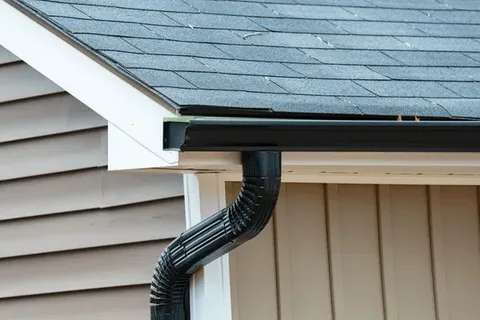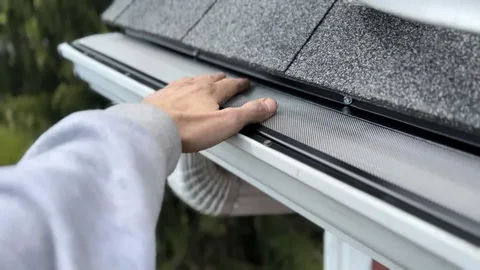Your roof is one of the most critical components of your home, protecting you and your belongings from the elements. While shingles play a crucial role in safeguarding your roof, they are not the only indicators of its health. Knowing when your roof needs replacement goes beyond just spotting worn-out shingles. In this comprehensive guide, we’ll explore the various signs that suggest your roof requires attention and delve into the importance of proactive maintenance.
The Importance of a Healthy Roof
Protection against the Elements:
A roof’s primary function is to shield your home from weather conditions such as rain, snow, hail, and harsh sunlight. A compromised roof puts your property at risk, leading to potential water damage, structural issues, and compromised insulation.
Longevity and Value of Your Home:
A well-maintained roof contributes to the longevity and value of your home. Regular inspections and timely replacements can prevent more extensive and expensive damages, ensuring your property remains a secure and valuable asset.
Signs Your Roof Needs Attention:
Age of the Roof:
One of the most critical factors in determining whether your roof needs replacement is its age. Most roofs have a lifespan of 20-25 years, depending on the materials used. If your roof is nearing or has surpassed this timeframe, it’s essential to closely monitor its condition.
Shingle Issues:
-
Curling or Buckling:
Inspect your shingles for signs of curling or buckling, as these indicate aging and weathering. Curled or buckled shingles lose their effectiveness in protecting your roof and are a clear signal that a replacement may be necessary.
-
Missing Roof Shingles:
Missing shingles leave vulnerable spots on your roof, allowing water to seep through. If you notice any gaps or missing shingles, it’s crucial to address the issue promptly to prevent further damage.
-
Granule Loss:
Asphalt shingles are coated with granules to protect them from the sun’s UV rays. If you find an excessive amount of granules in your gutters or notice bald spots on your shingles, it’s a sign that the protective layer is wearing off, leaving your roof susceptible to damage.
Interior Signs:
Water stains on your ceiling are clear indicators of a leaking roof. When ignored, these stains can lead to mold growth and compromise the structural integrity of your home. Addressing the leak promptly is crucial to prevent further damage.
-
Sagging and Stains:
A sagging roofline is a severe issue that demands immediate attention. It suggests structural problems and could be a sign of a compromised roof deck. Contact a professional to assess the extent of the damage and recommend appropriate repairs or replacement.
Attic Issues:
-
Daylight Penetration:
During the daytime, inspect your attic for any signs of daylight coming through the roof boards. If you can see sunlight, it means there are openings in your roof that need to be addressed to prevent water infiltration.
-
Insulation Damage:
Examine your attic insulation for signs of moisture or mold growth. Damaged insulation is an indication of a roof leak that requires prompt attention.
Proactive Roof Maintenance
Regular Inspections:
Performing regular roof inspections is crucial for identifying issues before they escalate. Schedule professional inspections at least once a year and conduct visual checks after severe weather events.
Clearing Debris:
Leaves, branches, and debris can accumulate on your roof, leading to water pooling and potential damage. Regularly clear your roof of debris to ensure proper drainage and prevent unnecessary stress on the structure.
Gutter Maintenance:
Clogged gutters can cause water backup, leading to roof damage and leaks. Clean your gutters regularly to ensure proper water flow and prevent water from seeping into your home.
Trim Overhanging Branches:
Overhanging branches can scratch and damage your roof during storms. Trim branches that extend over your roof to minimize the risk of falling debris and potential damage.
Hiring a Professional Roofing Contractor
Importance of Professional Assessment:
While DIY inspections are beneficial, they may not uncover all potential issues. Hiring a professional roofing contractor ensures a thorough assessment of your roof’s condition, with the expertise to identify subtle signs of damage.
Choosing the Right Materials:
Consult with a roofing professional to choose the right materials for your replacement. Consider factors such as climate, budget, and aesthetic preferences to ensure a durable and visually appealing roof.
Proper Installation:
Proper installation is crucial for the longevity and effectiveness of your new roof. Hire a reputable roofing contractor with a proven track record to ensure the installation is done correctly.
Cost Considerations and Budgeting
Financial Planning:
Roof replacement is a significant investment, and it’s crucial to plan for the costs involved. Consider obtaining multiple quotes from reputable roofing contractors to get a clear understanding of the budget required for the project.
Insurance Coverage:
In some cases, roof replacement may be covered by your homeowner’s insurance, especially if the damage is the result of a covered peril, such as a storm or fallen tree. Review your insurance policy and consult with your provider to determine the extent of coverage and any necessary documentation required for a claim.
Financing Options:
If the cost of roof replacement exceeds your immediate budget, explore financing options. Some roofing contractors offer financing plans, and there are also home improvement loans available. Carefully assess the terms and interest rates to find a solution that aligns with your financial situation.
DIY vs. Professional Roof Replacement
DIY Risks:
While DIY projects can be satisfying, roof replacement is a complex and hazardous task that requires professional expertise. Working at heights, handling roofing materials, and ensuring proper installation demand skills and safety precautions that are best left to experienced professionals.
Warranty Considerations:
Professional roofing contractors typically offer warranties on their workmanship and the materials used. This warranty provides peace of mind, ensuring that any issues arising from the installation will be addressed at no additional cost within a specified timeframe. DIY projects lack this level of protection.
Time and Efficiency:
Professional roofers are equipped with the knowledge, tools, and manpower to complete the job efficiently. Attempting a DIY replacement can lead to extended timelines, leaving your home exposed to potential risks for a more extended period.
Conclusion
Recognizing the signs of a failing roof, understanding the importance of proactive maintenance, and making informed decisions about roof replacement are integral aspects of homeownership. Beyond merely replacing worn-out shingles, addressing underlying issues promptly is crucial for the long-term health of your home. By investing in a professional assessment, choosing the right materials, and adhering to safety and environmental considerations, you can ensure that your new roof provides optimal protection and longevity. Remember, a well-maintained roof not only safeguards your home but also adds value to your property, making it a worthwhile investment in the overall well-being and sustainability of your living space.




